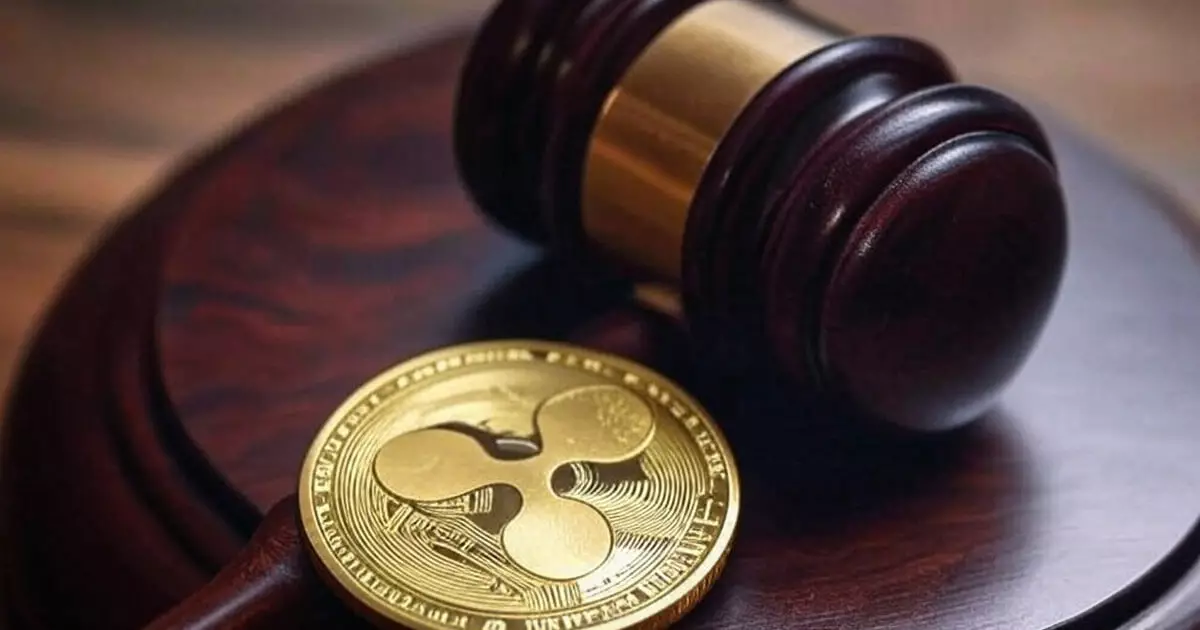The recent proposed settlement agreement between the U.S. Securities and Exchange Commission (SEC) and Ripple, alongside key figures from the company, has significant implications that extend beyond legal boundaries. On May 8, 2023, the SEC filed to resolve its long-standing civil enforcement action against Ripple, its CEO Brad Garlinghouse, and Executive Chairman Chris Larsen. The agreement proposes Ripple pay a $50 million civil penalty, while also potentially retrieving a whopping $75 million currently held in escrow. This move marks a pivotal moment in the ongoing complex dance between regulatory bodies and digital currency entities, especially amidst the tumultuous landscape of cryptocurrency.
Many in the crypto community may see this as a victory, hinting at a more lenient approach from the SEC toward digital assets, yet it raises an array of questions regarding priorities in regulation. The SEC’s focus on settling could merely reveal a shifting strategy amid rising scrutiny and controversy around cryptocurrencies, rather than a definitive endorsement of Ripple’s business model or actions. The phrase “current enforcement priorities” leaves room for speculation about future regulations, potentially creating a climate of uncertainty for innovators in the space.
The Symbol of Legal Uncertainty in the Crypto Sphere
Ripple’s saga—beginning with its 2020 civil case alleging unregistered securities offerings—has captured widespread attention, becoming emblematic of the broader struggles faced by cryptocurrency companies grappling with varying regulatory interpretations. This case has been particularly nasty, exposing the underbelly of regulatory authorities that may still be finding their footing in this rapidly evolving sector. The SEC’s assertion that Garlinghouse and Larsen aided and abetted violations raises more concerns about how regulators determine who is accountable in a decentralized structure.
Even as Ripple looks to resolve this predicament, it is important to recognize that it does not serve as a blanket absolution for other crypto firms that could find themselves in similar legal quagmires. The SEC emphasizes that this settlement does not offer a favorable ruling on the case’s underlying matters. For the cryptosphere, this creates an unsettling precedent; it embodies a cautionary tale for firms wanting to innovate in this space. Companies might find themselves treading carefully, weighing the risk of innovation against possible SEC scrutiny, leading to a chilling effect on entrepreneurship.
Judicial Undertones: The Role of the Court in Crypto’s Future
As this settlement meanders through the legal system, the role of the judiciary cannot be overstated. Judge Analisa Torres will be tasked with issuing an indicative ruling, which carries the weight of potentially dissolving critical injunctions and determining the fate of funds in escrow. The court’s decision will undoubtedly showcase how seriously it regards the interplay between innovation and regulation in the cryptocurrency space. The expectation is that a swift ruling could set a tone for how other cases involving crypto unfold in the future.
However, delays or complications in this ruling might deepen the confusion faced by crypto firms. If Judge Torres were to refuse or impose stricter terms, it could embolden the SEC to maintain its heavy-handed approach in other ongoing cases. The stakes are high, as the broader cryptocurrency community watches closely; the Judge’s ruling might serve as a bellwether for the future legality of various crypto-based operations.
A New Regulatory Landscape—Or the Same Old Game?
The proposed $125 million settlement is undoubtedly a step toward closure in Ripple’s long-lasting battle with the SEC. But it begs the question: Is this truly a milestone for the cryptocurrency industry, or merely a Band-Aid solution to an ongoing regulatory problem? Despite Ripple’s apparent willingness to settle, what does this say about the direction of the SEC’s stance on cryptocurrency?
Many will argue that regulatory bodies are still in the early stages of grappling with the implications of digital currencies. If the government truly intends to promote innovation, it must engage meaningfully with the cryptocurrency sector, providing clearer guidelines rather than the vague threats that have characterized its approach.
The balance between protecting investors and encouraging innovation is delicate. While the proposed settlement may appear to signal a thawing of tensions, lingering uncertainties remain. Firms should tread with caution while pushing the boundaries of what blockchain technology can achieve. Otherwise, they may find themselves ensnared in regulatory webs like Ripple has been for the past four years—a scenario that should instill fear into the heart of the ambitious crypto entrepreneur.


Leave a Reply